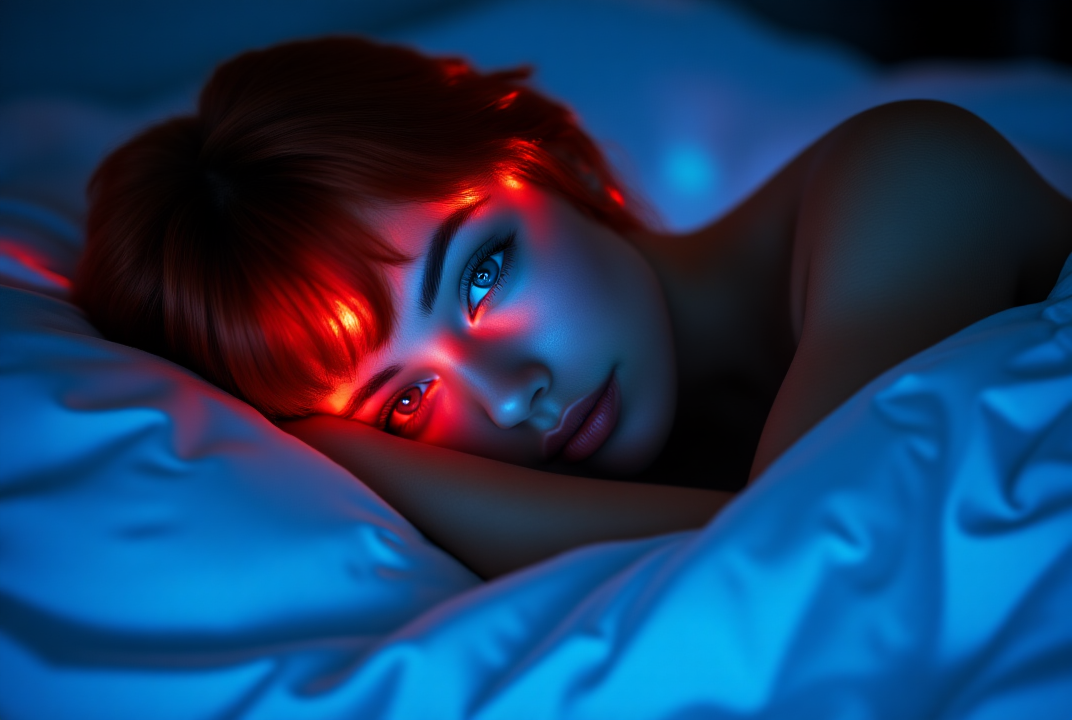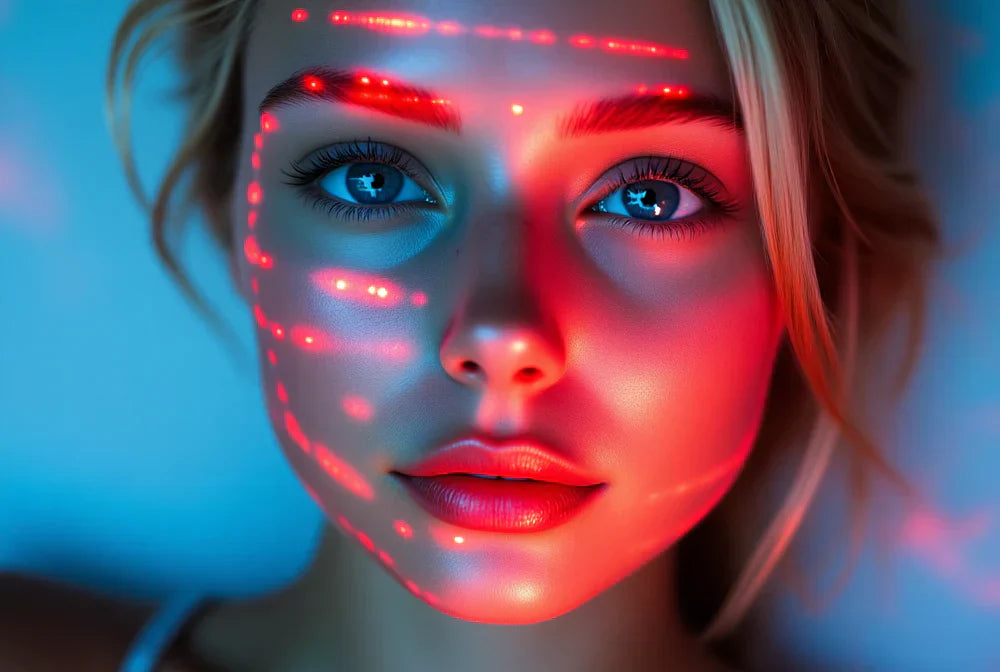Imagine waking up each morning feeling invigorated, your mind sharp and your body ready to embrace the challenges ahead. For many, this vision remains just out of reach, as morning fatigue and grogginess persist despite seemingly adequate rest. Whether you're a busy professional, a dedicated student, or a caregiver balancing numerous responsibilities, the struggle to achieve truly restorative sleep is a common thread. This article offers a beacon of hope, presenting evidence-based tips and strategies to help you unlock the secrets of restful sleep, paving the way for a more vibrant and productive life.
Why Do You Still Feel Tired Even After Getting Enough Sleep?
Feeling tired despite getting enough sleep can stem from several underlying factors that disrupt the restorative nature of your rest. Sleep quality is as crucial as sleep quantity; disturbances such as sleep apnea, insomnia, or restless leg syndrome can fragment your sleep cycle, preventing you from reaching the deep, restorative stages of sleep. Additionally, lifestyle factors like stress, irregular sleep schedules, and excessive screen time before bed can interfere with your body's natural circadian rhythms, leading to inadequate rest. Nutritional deficiencies, dehydration, or underlying health conditions such as thyroid imbalances or depression can also contribute to persistent fatigue. Understanding and addressing these elements is key to achieving truly rejuvenating sleep and waking up refreshed.
No Matter How Much Sleep I Get I Can’t Wake Up: Sleep Tips
Establish a Consistent Sleep Schedule
One of the most effective ways to enhance sleep quality is to maintain a consistent sleep schedule. Going to bed and waking up at the same time every day, even on weekends, helps regulate your body's internal clock, making it easier to fall asleep and wake up naturally. This consistency reinforces your circadian rhythms, ensuring that your body knows when to initiate sleep and when to prepare for waking. Over time, this routine can lead to more restful and uninterrupted sleep, allowing you to wake up feeling refreshed and energized.
Create a Relaxing Bedtime Routine
A calming pre-sleep routine can signal to your body that it's time to wind down and prepare for rest. Consider activities such as reading a book, taking a warm bath, or practicing mindfulness meditation. These activities can help reduce stress and anxiety, which are common culprits of sleep disturbances. By creating a peaceful environment and engaging in soothing activities, you can ease the transition from wakefulness to sleep, promoting deeper and more restorative rest.
Optimize Your Sleep Environment
Your sleep environment plays a crucial role in the quality of your rest. Ensure your bedroom is conducive to sleep by keeping it cool, dark, and quiet. Invest in a comfortable mattress and pillows that support your preferred sleeping position. Consider using blackout curtains to block out light and a white noise machine to mask disruptive sounds. By tailoring your sleep environment to your preferences, you can minimize disturbances and create a sanctuary that promotes uninterrupted, high-quality sleep.
Incorporate Red Light Therapy
Red light therapy is an innovative approach to improving sleep quality by harnessing the power of specific wavelengths of light. Unlike blue light, which can disrupt your circadian rhythm by suppressing melatonin production, red light has been shown to support the natural sleep cycle. Exposure to red light in the evening can help signal to your body that it's time to prepare for sleep, enhancing melatonin production and promoting relaxation. Incorporating red light therapy into your bedtime routine may help you fall asleep more easily and enjoy deeper, more restorative sleep.
Limit Screen Time Before Bed
The blue light emitted by phones, tablets, and computers can interfere with your body's natural sleep-wake cycle by inhibiting melatonin production. To improve sleep quality, aim to limit screen time at least an hour before bed. Instead, engage in activities that promote relaxation and prepare your mind and body for rest. If avoiding screens isn't feasible, consider using blue light filters or glasses to reduce exposure. By minimizing blue light exposure in the evening, you can support your body's natural sleep processes and wake up feeling more refreshed.
Why Does Red Light Therapy Help For Sleep?
Red light therapy aids sleep by leveraging specific wavelengths of light that positively influence the body's natural circadian rhythms and melatonin production. Unlike blue light, which can disrupt sleep by suppressing melatonin, red light is less intrusive and can actually enhance the production of this crucial sleep hormone. This therapy works by penetrating the skin and stimulating cellular energy production, which can help regulate the sleep-wake cycle and promote relaxation. By incorporating red light therapy into your evening routine, you can create an environment that signals to your body that it's time to wind down, facilitating a smoother transition into restful sleep and helping you wake up feeling rejuvenated.
Can Red Light Therapy Help Improve Deep Sleep and Morning Alertness?
Yes, red light therapy can potentially enhance deep sleep and improve morning alertness by supporting the body's natural sleep processes. The gentle wavelengths of red light help regulate the production of melatonin, the hormone responsible for sleep, allowing for a more seamless transition into the deeper stages of sleep where the most restorative processes occur. By promoting a more consistent and uninterrupted sleep cycle, red light therapy can contribute to a higher quality of rest, enabling you to experience the full benefits of deep sleep. As a result, individuals may find themselves waking up with increased alertness and energy, ready to tackle the day with clarity and vigor.
When Is The Best Time To Use Red Light Therapy For Sleep Benefits?
The optimal time to use red light therapy for sleep benefits is during the evening, approximately 30 to 60 minutes before bedtime. This timing aligns with your body's natural circadian rhythm, helping to signal the transition from wakefulness to rest. By incorporating red light therapy into your pre-sleep routine, you can enhance melatonin production and promote relaxation, creating an ideal environment for sleep. This practice not only prepares your body for a restful night but also minimizes the impact of any disruptive blue light exposure from screens, further supporting your journey toward deeper, more restorative sleep.
Tips For Using Red Light Therapy For Sleep and Waking Up Refreshed
- Choose the Right Device: Invest in a high-quality red light therapy device that emits wavelengths between 600-650 nanometers, as these are most effective for promoting sleep and relaxation. Ensure the device is designed for safe use at home and meets safety standards.
- Set a Regular Schedule: Use red light therapy consistently each evening, ideally 30 to 60 minutes before bedtime. Establishing a routine helps reinforce your body's natural sleep-wake cycle, making it easier to fall asleep and wake up refreshed.
- Create a Calm Environment: Incorporate red light therapy into a relaxing pre-sleep routine. Use the therapy in a dimly lit room, free from distractions, to enhance its calming effects and signal to your body that it's time to wind down.
- Monitor Exposure Time: Start with short sessions of about 10 to 20 minutes and gradually increase as needed. Pay attention to how your body responds, and adjust the duration to find the optimal exposure time that promotes restful sleep without overstimulation.
- Combine with Other Sleep Hygiene Practices: Enhance the benefits of red light therapy by pairing it with other sleep-promoting habits, such as maintaining a consistent sleep schedule, limiting caffeine intake in the afternoon, and ensuring your sleep environment is comfortable and conducive to rest.
Conclusion
In conclusion, achieving restful and rejuvenating sleep is within reach, even for those who struggle to wake up refreshed despite adequate sleep duration. By embracing a holistic approach that includes establishing a consistent sleep schedule, creating a calming bedtime routine, optimizing your sleep environment, and incorporating innovative solutions like red light therapy, you can significantly enhance your sleep quality. These strategies not only support deeper, more restorative sleep but also empower you to greet each morning with renewed energy and clarity. As you integrate these practices into your daily life, you'll find yourself better equipped to tackle the demands of your day with vigor and enthusiasm, paving the way for a healthier, more balanced lifestyle.
Final Thoughts
Struggling to wake up refreshed despite getting enough sleep? Discover the innovative solutions at EMR-TEK, crafted to fit effortlessly into your lifestyle. Whether you're in search of a portable device for on-the-go convenience or a comprehensive system for home or professional settings, we have you covered. Our blue light glasses are designed to alleviate eye strain, making them an essential addition to your wellness arsenal. Dive into our collection of red light therapy products and start your journey toward healthier, more radiant skin today.
Sources
-
https://www.sleepfoundation.org/sleep-deprivation/interrupted-sleep
-
https://mychn.org/why-you-need-to-limit-screen-time-before-bed/
Disclaimer*: EMR-TEK’s red infrared light therapy devices, blue light blocking glasses, and other products are intended solely for personal wellness and fitness use. They are not designed to diagnose, treat, cure, or prevent any disease and should not be considered medical devices. We do not make any therapeutic claims. Our products align with the FDA’s “General Wellness: Policy on Low Risk Devices” guidelines and do not require FDA clearance. Please note, EMR-TEK’s products are for personal use only and not for commercial application.*




Share:
How To Get Rid Of 11 Lines: Step-by-Step
Red Light Therapy vs Sauna: What's The Difference?